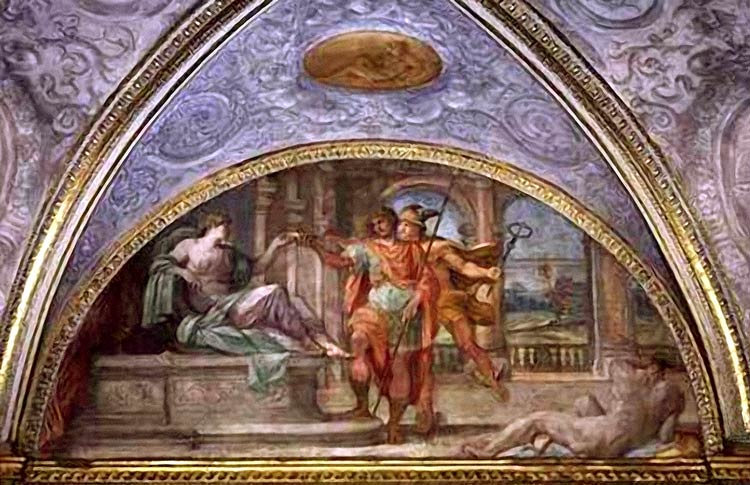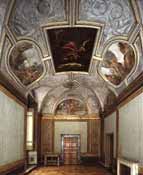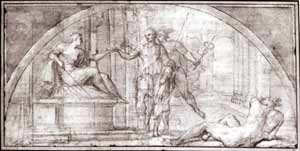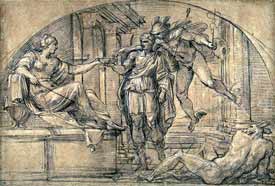Italy, (1560-1609)

-
Ulysses and Circe
- [Mercury protecting Ulysses from the charms of Circe]
- (1595-1597), ceiling fresco
- Camerino Farnese, Palazzo Farnese, Rome
-
Editor’s Note:
Cardinal Odoardo Farnese (1573-1626) commissioned Annibale Carracci to decorate the Camerino Farnese in the Palazzo Farnese, Rome. The cardinal used this room as his private study. Carracci worked on the Camerino from 1595 to 1597, just prior to starting his decoration of the more famous and elaborate Farnese Gallery in the same palace.
The Camerino is on the first, or principal, floor of the Palazzo Farnese, it measures slightly more than fifteen by thirty feet. The ceiling is painted in numerous themed frescos, each surrounded by a painted frame – an example of quadro riportato, which gives the illusion of a framed image hung on the ceiling when in reality both the scene and the frame are frescoed. to the right here is a view of the Camerino.
About the Artist
Annibale Carracci (1560-1609), also Annibal Carrache, was an Italian Baroque painter. His technique emphasized typically Florentine linear draftsmanship, as exemplified by Raphael but he also loved the glimmering colors and mistier edges of objects derived from the Venetian painters like Titian, This eclecticism was to become the defining trait of Carracci and other artists of the Baroque Emilian or Bolognese School.
Frescoes were regarded as the test of a great painter’s mettle, and throughout 17th and 18th centuries, Carracci’s Farnese Ceiling was considered the unrivaled masterpiece of fresco painting for its age, yet Caravaggio almost never worked in fresco before that commission.
Carracci was remarkably eclectic in his choice of themes, painting landscapes, genre scenes, and portraits, including a series of self-portraits across the ages. He was one of the first Italian painters to paint a canvas wherein landscape took priority over figures. Carracci’s art also had a less formal side that comes out in his caricatures – he is generally credited with inventing the form. [DES-01/11]



